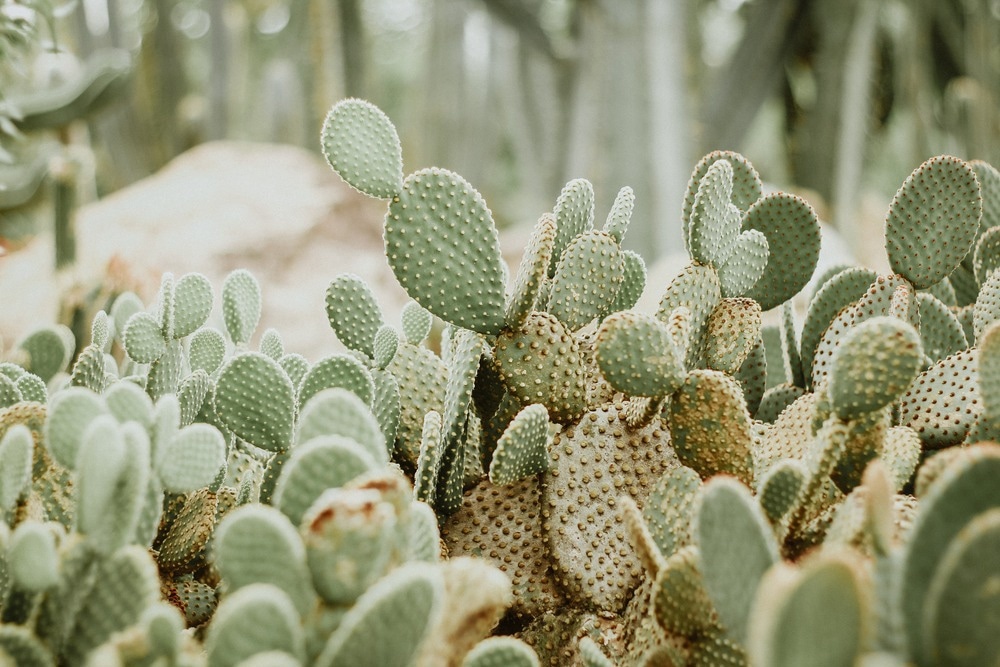In a recent review published in Foods, researchers described promising features of using cactus in the food sector, addressing the plant's functional, nutritional, and sustainable qualities.
 Study: New Functional Foods with Cactus Components: SustainablePerspectives and Future Trends. Image Credit: Franciele Rodrigues/Shutterstock.com
Study: New Functional Foods with Cactus Components: SustainablePerspectives and Future Trends. Image Credit: Franciele Rodrigues/Shutterstock.com
Background
Cacti have long been essential to traditional diets in semi-arid and arid regions. Cacti's unique functional and nutritional properties, including phytochemicals, high dietary fiber content, and low caloric value, present significant opportunities for use in the food sector. The plant can be used as raw materials for functional foods, providing dietary fiber, minerals, ascorbic acid (vitamin C), phenolic compounds, and antioxidant components.
Cacti also have ecological relevance in preventing soil impoverishment and capturing carbon dioxide, which contributes to soil temperature increases. Therefore, cacti plants hold promise for the production of foods in an environment-friendly manner. Further exploration of cacti in the pharmaceutical sector and functional food development is needed to harness their true potential.
About the review
In the present review, researchers provided an overview of cacti's potential for the food sector to promote sustainable farming and commercial use of neglected plants such as cacti.
Cacti as suitable and sustainable food alternatives
Cacti grow in dry and low-income regions where agriculture is the primary means of survival, but access to most vegetables is relatively poor. Their crassulacean acid metabolism (CAM) favors efficient use of water and the performance of photosynthesis the following day, during which several bioactive compounds such as lignins, carboxylic acids, phenols, and flavonoids are produced in response to environmental stresses such as high temperatures and water scarcity.
Being xerophytic plants, cacti can accumulate and store large quantities of water, in addition to edible fruit, and are drought-tolerant, with survival ability in times of low and erratic rainfall. Therefore, cacti may be used as nutritionally rich food alternatives in harsh climatic zones where both food access and diversity are challenging.
Cacti cultivation as an innovative, functional, and sustainable food ingredient could help meet the Sustainable Development Goals (SDGs) to eliminate hunger by 2030, although challenged by the economic turmoil caused by the coronavirus disease 2019 (COVID-19) pandemic in several nations, especially Africa, Latin America, and Asia.
However, cacti plants may contain allergens and toxins; and excessive consumption of mescaline from cacti can cause kidney stones. Cacti species considered safe for human consumption include Cereus jamacaru, Opuntia cochenillifera, Cereus hildmannianus, Tacinga inamoena, Pilosocereus pachycladus, and Pilosocereus gounellei.
Cacti as nutrition-dense food alternatives
Cactus fruits, particularly nopal cladodes (Opuntia ficus-indica), have a higher protein content (1.2 to 2.0 g of protein per 100.0 g) than other commonly consumed fruits such as apples, bananas, and oranges, and common vegetables including cucumber and lettuce, albeit lower than that of grains like wheat and rice. The Hylocereus species (dragon fruit) is an appealing source of energy for meals due to its comparatively high amount of carbohydrates.
Prickly pear (Opuntia ficus-indica) contains high amounts of dietary fiber (three to five grams of fiber per 100.0 g), surpassing the fiber content in oranges, bananas, apples, broccoli, wheat, and rice. Therefore, cacti consumption may benefit individuals with chronic cardiovascular diseases, diabetes, and cancer. In addition, the calcium content in Opuntia ficus-indica (220.0 to 320.0 mg of calcium per 100.0 mg) significantly surpasses that in apples, bananas, and oranges, indicating that cacti intake can improve bone health.
Moreover, the ascorbic acid content in the fruits of Opuntia ficus-indica (10.0 to 40.0 mg of ascorbic acid per 100.0 g) and Peruvian cacti (5.0 to 20.0 mg per 100.0 g) is greater compared to that of apples yet less than that of bananas and oranges. Various cacti species contain bioactive compounds such as pigments (β-cyanins, carotenoids, and β-lains), flavonoids (kaempferol, quercetin, and isorhamnetin), minerals (copper, zinc, manganese, and iron), phenolic compounds, and vitamins that confer antioxidant properties to the plant.
Cacti species with prebiotic and gut health-boosting potential include Opuntia fícus-indica, Opuntia joconostle, Pilosocereus gounellei, and Opuntia streptacantha. Cacti’s applications in the food industry include use as natural thickening agents in soups, bakery items, and sauces; the development of bioplastics, edible coatings, and gluten-free foods; encapsulating agents; gelling and stabilizing agents in jams, marmalades, and jellies; as fat substitutes in baked products and stabilize acidic protein drinks; as food coloring agents, cooking oils, and components of dips, spreads, and salad dressings.
Conclusions
Based on the review findings, underutilized plants, like cacti, have significant potential in the food sector as an environmentally friendly and nutrient-rich ingredient. Cacti plants offer ecological benefits and functional and nutritional characteristics and may be used to prepare prebiotics, probiotics, postbiotics, and para-probiotics.
Commercial cactus production reduces ecological harm and encourages sustainable agriculture. Cactus components are widely used in food creation, including jellies, bread, coloring agents, probiotics, postbiotics, and para-probiotics. Further research is needed on processing methods and interactions among probiotics and unprocessed components to evaluate product bioactivity and functionality.